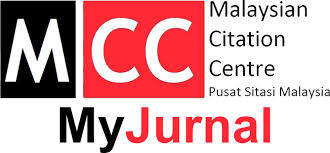DAWR TATBIQ ISTRATIJIYYAH AL-MARUNAH FI TURUQ AL-TADRIS FI AL-MADARIS AL-HUKMIYYAH ‘ALA ISTIMRARIYYAH AL-TA’LIM KHILAL JA’IHAH KUFID-19
19 [THE ROLE OF IMPLEMENTING THE FLEXIBILITY STRATEGY IN TEACHING METHOD IN MALAYSIAN PUBLIC SCHOOLS ON THE CONTINUITY OF EDUCATION DURING THE COVID-19 PANDEMIC]
Keywords:
strategy, secondary schools, principals, administrators, continuity of educationAbstract
Abstract: The current study aims to test the role of implementing the Flexibility in Pedagogies Strategy in Malaysian public schools on the continuity of education during the Covid-19 crisis. Public secondary schools in the state of Kuala Lumpur in Malaysia are considered to be the target study population, which number 113 schools in the state of Kuala Lumpur. The study sample included 186 principals and administrative employees in these schools. A Quantitative Survey Questionnaire will be used to collect data, so that the research questionnaire measures the independent variable ( The strategy of flexibility of teaching methods) and the dependent variable, (continuity of education). Flexible teaching methods have a statistically significant impact on the continuity of education in Malaysian public secondary schools. The results also indicate the positive direction of this relationship, that is, the application of the strategy of flexibility of teaching methods is directly proportional to the continuity of secondary school education. The greater the degree of application of the strategy of flexibility of teaching methods, the greater the probability of continuity of school education, and vice versa.
References
Antonio, R. L. B. 2022. Assessing flipped classrooms in flexible learning via the Community of Inquiry framework. ETERNAL (English, Teaching, Learning, and Research Journal) 8(1): 94-107.
Bartusevičienė, I., Pazaver, A., & Kitada, M. 2021. Building a resilient university: ensuring academic continuity—transition from face-to-face to online in the COVID-19 pandemic. WMU Journal of Maritime Affairs 20(2): 151-172.
Dayagbil, F. T., Palompon, D. R., Garcia, L. L. & Olvido, M. M. J. 2021, July. Teaching and learning continuity amid and beyond the pandemic. In Frontiers in Education 6: p. 678692). Frontiers Media SA.
Ibrahim, H. a. a. C., Hani Abu Al-Futouh Gad, Abu Zayed, & Ahmed Mohamed Ahmed. 2016. The impact of the use of electronic social media on academic achievement, acculturation, and attitude toward foreigners among students of the College of Education at the University of Hail. Arab Studies in Education and Psychology 80(80): 77-128
Izhar, N. A., Al-dheleai, Y. M. & Na, K. S. 2021. Teaching in the time of COVID-19: The challenges faced by teachers in initiating online class sessions. International Journal of Academic Research in Business and Social Sciences 11(2): 1294-1306.
Jena, P. K. 2020. Online learning during lockdown period for covid-19 in India. International Journal of Multidisciplinary Educational Research (IJMER), 9.
Malaysia, K. P. 2013. Malaysia education blueprint 2013-2025. Education 27(1): 1-268.
Al-Mutairi, Abdullah. 2019AD. The degree of availability of a culture of administrative creativity among school principals in the State of Kuwait and its relationship to teachers’ achievement motivation (unpublished master’s thesis). Al-Bayt University. Jordan.
Okoye, K., Rodriguez-Tort, J. A., Escamilla, J. & Hosseini, S. 2021. Technology-mediated teaching and learning process: A conceptual study of educators’ response amidst the Covid-19 pandemic. Education and Information Technologies 26: 7225-7257.
Puspitasari, I. N. N. 2021. Combination of synchronous and asynchronous models in online learning. Jurnal Pendidikan Islam Indonesia 5(2): 198-217.
Rayburn, S. W., Anderson, S., & Sierra, J. J. 2021. Future thinking continuity of learning in marketing: A student perspective on crisis management in higher education. Marketing Education Review 31(3): 241-255.
Sife, A., Lwoga, E., & Sanga, C. 2007. New technologies for teaching and learning: Challenges for higher learning institutions in developing countries. International journal of education and development using ICT 3(2): 57-67.
Tømte, C. 2013. Exploring teaching and learning with ICT in higher education institutions. In EDULEARN13 Proceedings (pp. 6461-6464). IATED.
TUAC Secretariat Briefing. 2020. Impact and Implications of the COVID 19-Crisis on Educational Systems and Households (pp. 1-9). The Trade Union Advisory Committee (TUAC) to the OECD.
UNESCO. 2020a. Distance Learning Solutions. UNESCO. https://en.unesco.org/covid19/educationresponse/solutions
UNESCO. 2020b. UNESCO Rallies International Organizations, Civil Society and Private Sector Partners in a Broad Coalition to Ensure #LearningNeverStops. UNESCO. https://en.unesco.org/news/unesco-rallies-international-organizations-civil-society-and-private-sector-partners-broad
Yusof, M. R., Yaakob, M. F. M., & Ibrahim, M. Y. 2019. Digital leadership among school leaders in Malaysia. Int. J. Innov. Technol. Explor. Eng 8(9): 1481-1485













